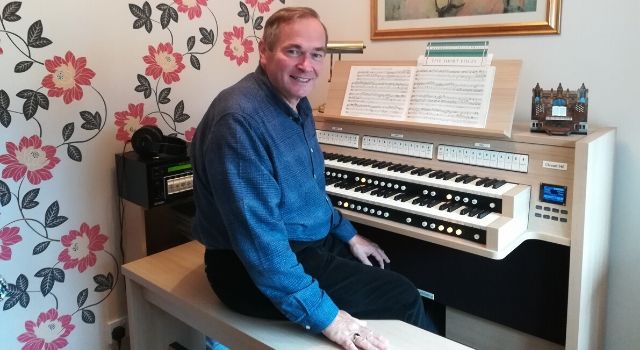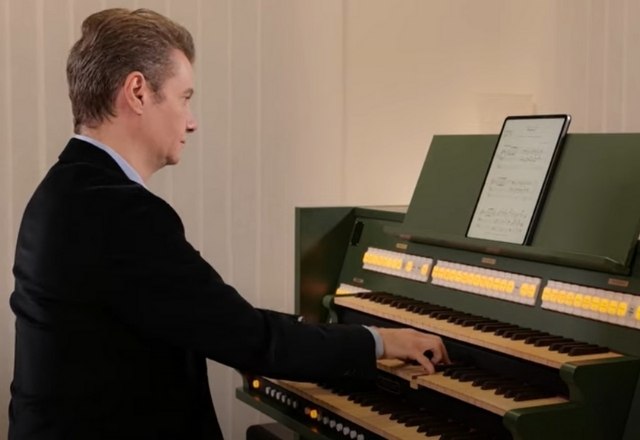I am indebted to our customer Graham Twist for bringing to my attention the material for this short blog.
Graham, a retired teacher is now a quite prolific composer of organ music which he regularly presents on Facebook and Youtube, often with a free score. These are played on his Chorum 40-S, supplemented at times with additional voices from a CM 100 expander module or Hauptwerk.
You can read more about Graham in our blog post – “Musical Composition to put a virus in its place“.

The Facility to build your own instrument
Chorum instruments come with 4 voicings that will vary depending upon the country in which they are sold. In the UK there is an English voicing with additional Baroque and Symphonic options. These are ‘preset’ fixed coherent instruments.
Below is Graham playing a recent Toccata composition on his Chorum 40-S which features a particularly nice Flute Harmonique in the quieter middle section.
Inspiring customers of Physis Organs to explore their own sound
Our other model ranges offer the facility to build your own instrument by any combination of voices from an extensive internal library.
This facility has inspired a number of customers of these ‘Physis’ instruments to explore what the technology can offer and Graham kindly brought to my attention the work of Paolo Ferioli who has spent some years as a pipe organ voicer. He is Italian but based in Switzerland who has both a Sonus 60 and a Positive 35. He is also a very proficient player.
I was especially taken by a short recording Graham passed to me of an instrument voiced in the style of Silberman.
Just listen to the magnificent way in which the 16 ft pedal reed underpins the melody and especially the final note as the reed slowly comes onto full speech. This mini crescendo of the single note is a really magical contribution and one of the rare occasions when the instrument by itself can add a fitting dynamic to enhance the musicality of the performance.
Paolo also recorded a piece by Graham (Lament) on his Positive 35 and as you can hear the voicing is very clearly very different.
I am not told what style Paolo was emulating on this voicing. Pushed to make a decision I would venture its more French than English but in the absence of any big reeds to give the game away I could be quite wrong. It would be interesting to get your opinion on this.
What is clear from these recordings is that just as a pipe organ requires the final application of tonal finishing a Viscount Physis organ also allows the final sound to be ‘fettled’ to the particular taste of the customer. Of course as with any skill this takes practice or of course you can perhaps ask Paolo to give you some help.
You can follow Paolo on his YouTube channel called Digital Pipes.
I have had a passion for church organs since the tender age of 12. I own and run Viscount Organs with a close attention to the detail that musicians appreciate; and a clear understanding of the benefits of digital technology and keeping to the traditional and emotional elements of organ playing.




Hello Graham, I very much enjoyed your fabulous theatre organ recording, And even though I have a two manual Wurli. Pipe console based HW organ here in our loft, I wish that i had 1% of your skill and musicianship.
Thank you again, Mel, in Florida, USA.